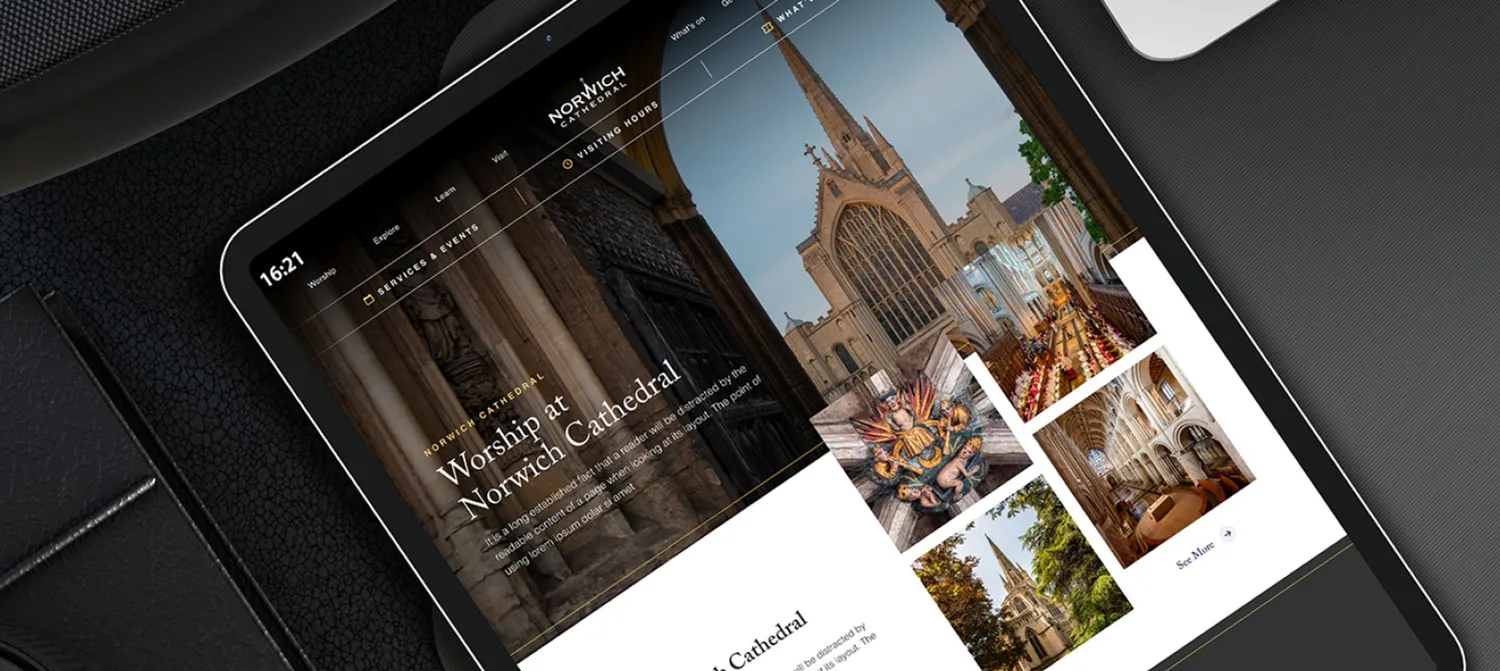17/05/23

As a marketing specialist, your primary focus might be on nothing else but marketing campaigns. And for a good reason! Nobody can roll out engaging content and effective campaigns quite as well as you.
You can spend days designing the perfect campaign with interesting copy and appealing visuals that will attract thousands of new website visitors. What would happen if none of them converted into paying customers, signed up for the newsletter, or followed the brand’s social media accounts, simply because the landing page was too difficult to navigate? Your efforts would be shut down by poor user experience.
The role of user experience in digital marketing cannot be underestimated. Bad UX design can put a damper on excellent content, while great UX design can enhance it. The marketing and UX departments don’t always cooperate, even though the two could benefit from working together. Here is how to fix it!
What is UX Design
UX, also known as user experience, is responsible for the experience of any website visitor. UX design puts the user and their needs at the foreground. The goal of a UX designer is to make the experience of any person visiting a website comfortable and easy. Ideally, a website visitor should be able to find what they’re looking for very quickly. They should know exactly what to click to get to their destination and be satisfied with the result.
Here are some features of a user-friendly website:
- It is easy to navigate;
- The user doesn’t have doubts about being in the wrong place;
- It’s compatible with mobile devices;
- The content is easy to read and understand;
- It loads quickly; and
- It’s visually appealing.
Benefits of Focusing on UX
How can user experience improve the effectiveness of a marketing campaign? The answer to that question is very simple. Great user experience has the power to solidify the brand as trustworthy and reliable. Brand image, though hardly quantifiable, can be far more important than sales numbers, especially in the beginning. Becoming a trustworthy brand in the eyes of shoppers can lead to higher conversions, increased sales, and more customers.
Here are some specific benefits of working with UX as a digital marketer:
More Shareable Content
CTAs, or calls to action, are beneficial for both marketing and UX professionals. For marketers, a cleverly placed CTA may be about making a sale or gaining a follower on social media. For UX designers, calls to action are about predicting users’ queries and making the answers to their questions available with a click of a button. The two go hand-in-hand.
Let’s say you designed a social media post about an upcoming event. To get more people to attend and generate more revenue as a result, you need the post to be easily shareable. From the point of view of user experience, the post needs to be easy to share too, so that readers can invite their friends to the event. The obvious solution that would benefit both depart ments is adding a “share” button with options such as “copy link” or “forward via message”. Such SEO UX best practices work to benefit both marketers and UX designers.
Easier Purchases
The goal of any for-profit business is, unsurprisingly, profit. As a marketer, your job is to drive profit through social media channels and other forms of marketing. If you’ve designed a successful campaign for a product, shoppers will be very disappointed when they visit the brand’s website and can’t easily find the product from the ad.
Working with a UX specialist, you can make learning more about the advertised product or service and consequently purchasing it easier than ever. Don’t make shoppers jump through extra hoops to find what they’re looking for; they might settle for a competitor whose website is easier to navigate.
Less Customer Support
Following the description of a user-friendly website from above, you can clearly see that one of the main features responsible for user experience is ease of navigation. If a website visitor finds what they are looking for with ease and in a matter of seconds, you’ve succeeded at optimising the website’s user experience.
Websites that are difficult to navigate and lack logical flow tend to have more customer support queries. Most queries regarding website navigation can be eliminated simply by making the website more user-friendly.
Higher Website Ranking
Here is why UX is important for SEO - it can help a website rank higher. For example, a clearly structured website is easier to navigate, which also makes it more desirable among search engines and website visitors. A search engine is more likely to put your web page at the top of the search results if it matches what the user is looking for.
Similarly, well-organised URLs featuring appropriate titles and keywords or phrases will rank higher in search engines. Users prefer websites that have a logical structure, with URLs clearly indicating where they are on the website and what other pages they might benefit from visiting.
Tips for Improving UX
You already know that better user experience can lead to higher achievements in the field of marketing and sales. Here are some ways to improve UX and things to pay attention to when auditing a website for the first time:
Work with the UX department.
Right off the bat, this little tip can make all the difference. Next time, before finalising a marketing campaign, show it to a UX specialist. They may have some pointers that you can implement with minimal effort to make the campaign more successful.
Check the speed of the website.
A slow website or app can really kill conversions. The majority of shoppers expect online store pages to take no longer than 3 seconds (https://digital.com/1-in-2-visitors-abandon-a-website-that-takes-more-than-6-seconds-to-load/) to load. If the landing page you’re directing people to takes too long to load, you will lose some customers regardless of how great the ad or product is.
Look for elements that make it difficult to navigate.
Every website and app has obvious pitfalls that you may be missing. For example, the hamburger menu, though very neat, is not always easy to interpret. For some people, 3 stripes mean the Adidas logo and not a navigation panel.
Know what the target audience is looking for.
Building a customer profile helps in understanding the customers’ train of thought when they enter the website. As a marketer, you need to map out consumer behaviour in regards to the website. Knowing what they might be looking for will help tremendously in making the website user-friendly.
Optimise for different devices.
You should aim to reach potential customers through different platforms and devices. Make sure the content you create, as well as the platform it will be shared through, is optimised for all devices and screen sizes. More and more people turn to smartphones and tablets every day; do not assume your audience will only view your content through their computers!
Implement CTAs.
As discussed earlier, calls to action are a useful tool for marketers and UX designers alike. Not only do they encourage viewers to convert, but they also make navigating content easier. It’s a win-win.
Use clear and concise copy.
Is content part of the user experience? Absolutely! So much so, that content that’s difficult to comprehend can do damage to the brand. Make sure the copy you write is easy to read and understand. Break it up into smaller paragraphs. Get straight to the point. Use visual elements to make it more fun to look at.
Run tests.
The best way to find out what’s wrong with a website is to ask the people. Encourage website visitors to provide feedback. Arrange a survey with a test group. But, don’t rely on the responders’ positive feedback. It’s often easier to lie and be nice than to tell the truth and risk sounding mean.









